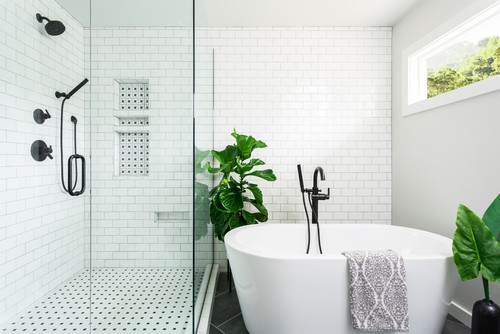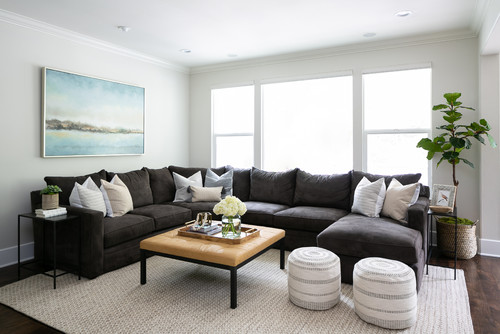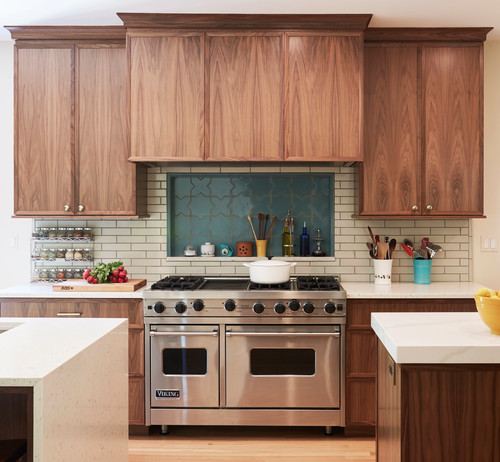Our feet log a lot of miles when making the rounds at trade shows. So we surveyed design pros to round up the comfortable footwear at every price point that doesn’t sacrifice on style.
Photo via Everlane
Women’s
Bells & Becks Mirella Gold, $345
Sumptuous metallic suede, gold tassels, a padded leather footbed, and a short stacked wooden heel. What’s not to love about these gorgeous, luxe mules, which are expertly handmade in Italy?
“A heel you can walk in. All. Damn. Day.” That’s the promise of these ballet-inspired rounded toe heels. Made of supple leather with a 2-inch block heel, elasticized back, and cushioned insole, these shoes were in such high demand that at one point, the wait list to buy them topped 28,000 people.
Tory Burch’s Emmy Mid-Heel Pearl Sandal, $199
Customers rave about the comfort of these mid-height leather heels embellished with pretty strands of pearls.
Birdies’ Phoebe in Floral Jacquard, $140
Are they slippers or are they shoes? There’s no reason to label these lovely hybrids from Birdies, which were made to echo the comfort of a slipper (think memory foam, comfort cushioning, arch support, pressure-reducing heels, and quilted satin linings), but with sturdy rubber soles that are meant to be worn outside. Buying them is a no-brainer, but good luck deciding between all the pretty options, including velvet, jacquard, calf hair, and vibrantly colored satins with OTT pom-poms.
Gucci’s Screener Leopard Print Sneaker, $750
You might think you can’t wear sneakers to design shows. But these 70’s-inspired Gucci trainers are chic enough to be the exception to that rule. Made in Italy of leopard-print suede with pink and black leather, they’re emblazoned with Gucci’s signature green and orange Web stripe.
Everlane’s Editor Slingback, $155
These sleek and streamlined, pointy-toed slingbacks have a minimal heel and are made of super soft suede for ultimate comfort. Snag them in classic black or cream, or in outfit-making colors like persimmon, rosewood pink, or mustard yellow.
Rothy’s The Point in Olive Camo, $145
If you haven’t tried Rothy’s, you’re missing out. The company promises that no break-in period is needed with their innovative, 3-D shoes. Made with comfort and sustainability in mind, the seamlessly designed shoes are made of recycled water bottles knit into a soft yarn, with super flexible carbon-free plastic soles. They’re incredibly lightweight, don’t ever seem to wear, and are machine-washable, making them perfect for travel.
Chunky block heels give feet more surface area for shock absorption than skinny heels, making for more comfortable strides. This padded Italian haircalf heel comes in seven versatile colors, but the “new neutral” leopard print might be the standout choice.
Dr. Scholl’s Countdown Wedge Bootie, $125
That’s right: Dr. Scholl’s makes chic shoes. Pair these super-versatile black leather booties with pants, dresses, or pencil skirts and tights. The 2 3/8-inch wedge heel gives a good amount of added height, and the wedge heel and cushioned insoles promise all-day comfort and reduced foot pressure and fatigue.
Shoe The Bear Kitten-Heeled Ankle Boots, $190
Add a pop-of-color to a basic black outfit with this playful pair of hot-pink booties. The eye-catching color adds drama, but the dainty kitten heel is easy of your soles.
Men’s
Cole Haan’s ØriginalGrand Wingtip Oxford, $150
The timeless style of a wingtip oxford, plus modern Grand.ØS cushioning technology. Made with buttery leather, handmade brogue accents, and Cole Haan’s propriety cushioning system, these oxfords are easy on the eye and your feet. Choose a classic color like chestnut-colored Woodbury, or this matte navy leather.
Ugg’s talent for comfy footwear extends far beyond slippers. These versatile leather boots are sleek enough to be worn with slacks for trade shows, yet sturdy enough to don with denim for construction site visits.
Ted Baker London’s Lansee Brogues, $90
Padded Airtex lining and an Ortholite cushioned footbed bring added comfort to these grey ultrasuede lace-ups.
Christian Louboutin’s Officialito P Flat, $895
Why should the ladies get all the Louboutins? These sophisticated loafers showcase black jacquard fabric woven with metallic Lurex thread, a calfskin toecap, and oversized cotton tassels. The quality craftsmanship and supple materials ensure a comfortable fit. Wear them all day, then kick up your signature Louboutin red soles at the end of it.
Cole Haan’s Washington Grand Laser Wingtip Oxford, $400
These reimagined dress shoes feature technology borrowed from running shoes, plus a modern perforated leather laser-cut design. Thanks to lightweight, cushioned energy foam, a precision-engineered anatomical footbed, and a flexible, full-motion outsole, you’ll look like you’re wearing oxfords, but feel like you’re sporting trainers.


























































































